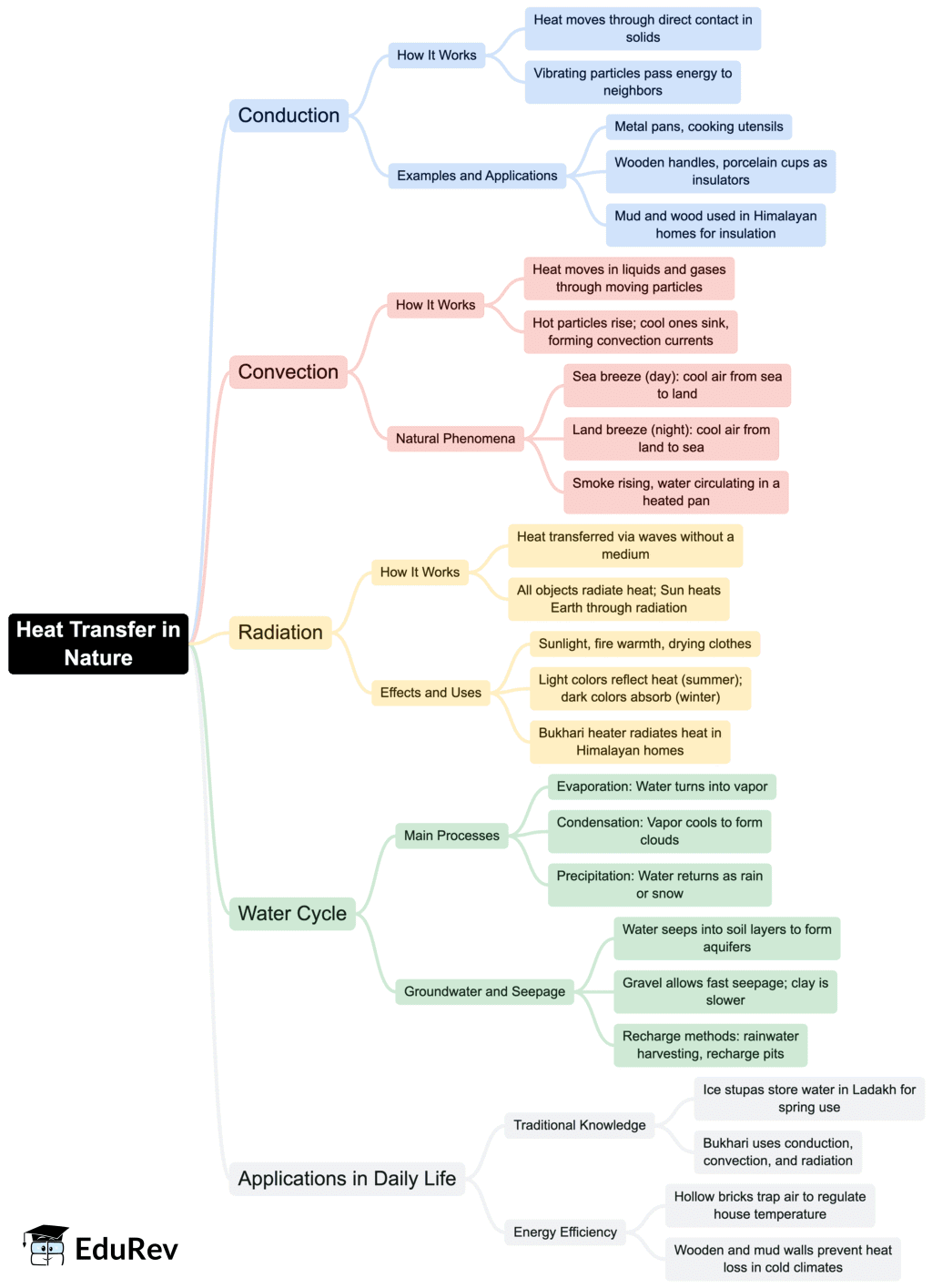Class 7 Exam > Class 7 Notes > Science Olympiad Class 7 > Mind Map: Heat Transfer in Nature
Class 7 Science Chapter 7 Mindmap - Heat Transfer in Nature

The document Class 7 Science Chapter 7 Mindmap - Heat Transfer in Nature is a part of the Class 7 Course Science Olympiad Class 7.
All you need of Class 7 at this link: Class 7
|
50 videos|130 docs|45 tests
|
FAQs on Class 7 Science Chapter 7 Mindmap - Heat Transfer in Nature
| 1. What are the three main methods of heat transfer in nature? |  |
Ans. The three main methods of heat transfer in nature are conduction, convection, and radiation. Conduction occurs when heat is transferred through direct contact between materials, convection involves the movement of fluids (liquids or gases) carrying heat with them, and radiation is the transfer of heat in the form of electromagnetic waves, such as sunlight.
| 2. How does heat transfer affect weather patterns? |  |
Ans. Heat transfer plays a crucial role in weather patterns by influencing air and water temperatures. For example, the sun heats the Earth's surface, causing warm air to rise and creating wind patterns. Similarly, ocean currents, which transfer heat between different areas of the ocean, can affect climate and weather conditions in coastal regions.
| 3. Can you explain the role of conduction in everyday life? |  |
Ans. Conduction is important in everyday life as it explains why hot objects can heat up cooler ones. For instance, when a metal spoon is placed in a hot pot of soup, the heat from the soup is conducted through the spoon, making it hot to the touch. This principle is also seen in cooking and heating systems, where heat is transferred through materials.
| 4. What is the significance of convection in the atmosphere? |  |
Ans. Convection is significant in the atmosphere as it helps distribute heat and moisture. Warm air rises, while cooler air sinks, creating circulation patterns. This process is essential for forming clouds, precipitation, and even thunderstorms, as it promotes the movement of warm, moist air upward where it can cool and condense.
| 5. How does radiation from the sun affect the Earth's climate? |  |
Ans. Radiation from the sun is the primary source of energy for the Earth's climate. It warms the planet's surface, which in turn affects air temperatures, ocean temperatures, and weather patterns. The balance between incoming solar radiation and outgoing heat helps regulate the Earth's climate and is crucial for supporting life.
Related Searches
















